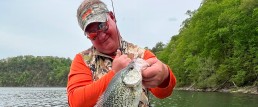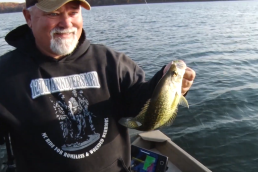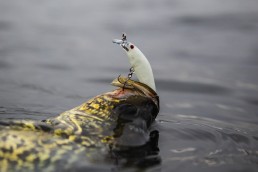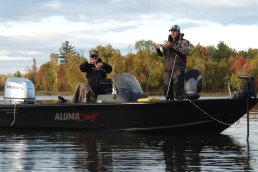Summertime Clear-Water Crappies
SHARE THIS POST
Hot temperatures and clear water can cause trouble for crappie fishermen. Despite a few obstacles including temperatures and boating traffic, it can be a great time to catch numbers of crappies with a variety of techniques. The following tactics work in waters from North to South.
“Summertime is a favorite season for me,” says Corey Thomas, a guide on Dale Hollow Lake in Kent./Tenn. (270-566-1152). “We have clear water, but the fish are in a stable pattern.”
Thomas says that successful fishermen on any clear waters know that finding and catching fish evolves around the thermocline. Learn the thermocline depth and you eliminate most of the water in the lake.
“The fish get in a narrow band of water. The depth will vary with water temperatures, but on my home lake, July will start with the thermocline at about 20 to 22 feet. The depth steps down a foot a week throughout the rest of summer.”
To make fishing easier, Thomas uses two colors on his mapping unit, with one color for water shallower than the thermocline and a different color for water that’s deeper. The intersection of the colors is where he finds fish. By pinpointing fishing depth, he eliminates most of the lake and doesn’t waste time fishing dead water.
The technique
“I like to use a slip-bobber and stay 30 to 35 feet away from the fish. I prefer structure that comes up about 10 feet off the bottom. I’ll use Spot-Lock on my trolling motor and stay in one position. LiveScope isn’t required but it’s good to use if you have it because you know exactly where your bait is positioned.
“I use a #4 Eagle Claw hook. I like a small hook and small minnow; crappies can’t resist it. The #4 hook allows the bait to have more action and it hooks up into the top of the crappie’s nostril every time, so you don’t lose the fish.
“Not everyone has high-tech electronics. That’s okay. Good fishing spots will take longer to find, but basic sonar will work to catch these fish because it’s structure fishing. Find the structure at the right depth, and you’ll find the fish.”
Thomas says 14- and 15-inch crappies are common from his lake. The brush piles hold good numbers of fish, but he recommends to not over-fish them. You can fish them one day, the next day you’ll catch half as many, and the third day maybe just one or two fish. Therefore, fishing them lightly and giving them several days rest is important for fishermen who regularly fish a lake.
His equipment is the 75th Anniversary B‘n’M 7.5-foot spinning combo, with 4-pound-test SOS line, and a pro series Thill Float. He says that slip floats can be a problem because they only have a line grommet in one end of the float. One good solution is to buy two floats to make one, taking the grommet out of one and putting it in the other float, so that float has a grommet on each end. The line won’t groove the float and easily slip through it. A sinker, bobber stop, and bead are the last parts of the rig. Place the stop at the depth you want the minnow.
“Bobber stops come in many forms,” says Thomas. “I’ve used rubber band, dental floss, and all the manufactured ones. None went through the guides like I wanted. One day, I was looking at an old line-counter reel that had Fireline braid on it, maybe 14-pound-test. I cut some off; it had zero memory and was completely limp. I tried it as a bobber stop. It was so small that when you cut the tag ends close, the knot won’t go through the bead or float, but it passes through line guides better. The modification will improve your fishing. You’ll be able to use the knot and float until you lose it. It’s easy to cast and you can set it to fish any depth.”
Are you enjoying this post?
You can be among the first to get the latest info on where to go, what to use and how to use it!
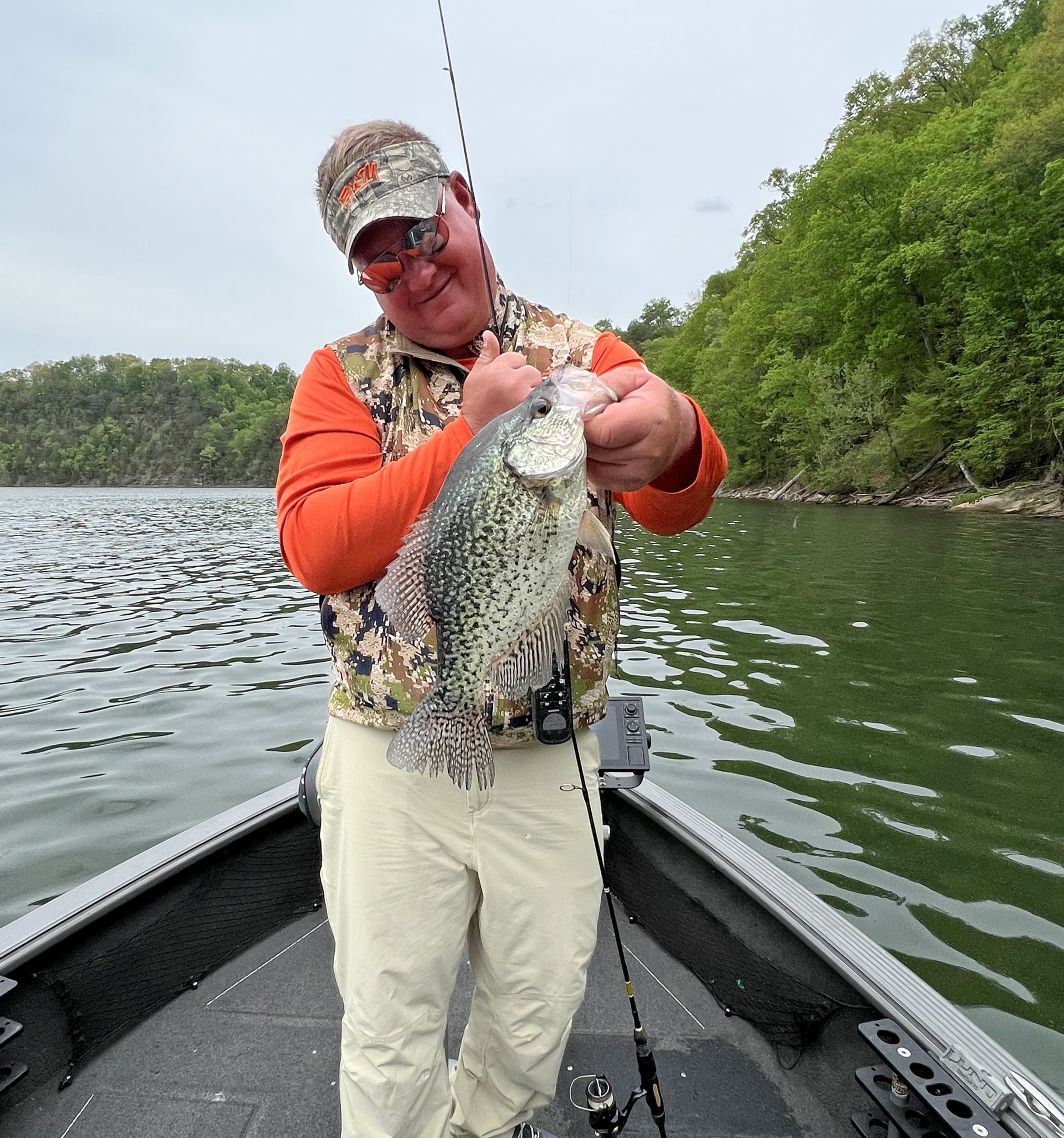
Casting
“We can catch summer fish by casting, too,” explains Thomas. “I catch more fish by using 2-pound-test line and casting a 1/16-ounce Popeye jig. On 2-pound test, the 1/16- will fall like a 1/8-ounce on larger-diameter line. I’m not sure why the Popeye works so much better than other jigs here, but we’ve not found anything better.
“Stick with the same plan as with slip floats: find deep brush piles with fish. Make long casts and concentrate on counting it down to reach the right depth.
“Another thing about summer crappies is, most of the time, you can’t force a technique on crappies, like spider rigging, pulling jigs, slip float or casting. You must accept that the presentation and bait will be on their terms, not yours. Use the technique that works best.”
Thomas’ summer tips
Thomas’ top tip is to be on a lake at daylight and off before noon. Don’t let the pleasure boaters eat you up and ruin your day. That’s important.
Look for gar. Crappies are usually feeding around the gar. They both like shad, so where and when the gar are feeding, expect crappies to be there feeding, too.
Learn. Read magazines, fishing reports and check out the crappie-specific sites like the Brushpile Fishing app.
Thomas says that most of the time, it’s important to maintain the speed of the jig when retrieving. The two things that will stop a bite is slowing or stopping the retrieve.
Tim Huffman has been writing for MidWest Outdoors over 36 years. His two books Limiting Out for Crappie and 300+ Crappie Fishing Tips are available from Amazon.com or Grizzly Jig Company 880-305-9866. Tim’s newest 2024 book, Papermouth, Modern Crappie Techniques, is available in Kindle or paperback from Amazon.
MWO
SHARE THIS POST
You may also like...
Did you enjoy this post?
You can be among the first to get the latest info on where to go, what to use and how to use it!
Tim Huffman
Tim Huffman specializes in crappie fishing, is editor for two crappie magazines, as well as writing for several others. In 2018, he published his sixth book, Limiting Out for Crappie, available at Amazon. His first article appeared in MidWest Outdoors in 1988.
